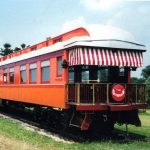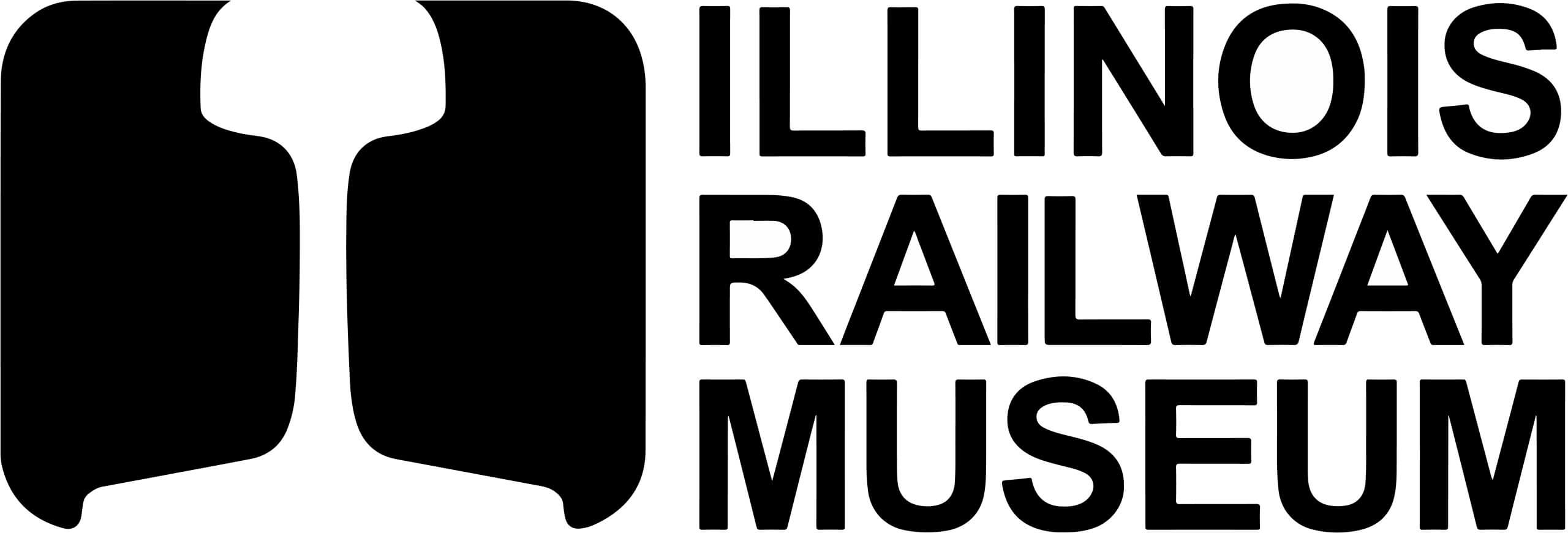Railroad Passenger and Baggage Cars

Milwaukee Road 'Lake City'
| Description: | 6 Sec 1 Cpt Parlor Observation |
Equipment Information
Milwaukee Road “Lake City” is an all-steel parlor-observation-sleeping car built for use on that railroad’s network between Chicago and the Pacific Northwest. It features an observation compartment with 180-degree views from the back of the train, a smoking lounge, and “section” seating that converted overnight into bunks with heavy curtains separating them.
Click here to support the preservation and restoration of passenger cars at IRM.
Milwaukee Road “Lake City” Details
Builder: Pullman
Year Built: 1915
Seats: 40
Length: 72ft 6in
Width: 10ft 1in
Height: ??
Weight: ??
Brakes: UC
Trucks: 6 Wheel
Description: 6 Section 1 Compartment Smoking Room Parlor Observation / Steel Heavyweight / Ex “Enumclaw” / Ex MILW X654
Arrived: 2012
Condition: Complete / restored / not operational
Read more about the history of this car in Rail & Wire #230
The 1894 Pullman Strike
Milwaukee Road Pullman observation car “Lake City” is a stunning example of the car builder’s art around the dawn of the 20th century. Railroad cars like this were turned out by the thousands at the Pullman plant on the south side of Chicago. By the 1890s, Pullman was building passenger cars for virtually every major railroad. It also operated these cars for the railroads on a lease arrangement.
The Pullman factory adjoined a model town, also named Pullman, where the Pullman Company owned all of the property. Workers rented their homes and bought their food from their employer. During the Panic, or recession, of 1893 the Pullman Company laid off workers and cut wages. But it didn’t cut rents or other costs for its workers living in Pullman.
Many Pullman employees were members of the newly-formed American Railway Union (ARU), which was led by Eugene Debs. In May 1894, they called a wildcat strike at the Pullman plant. The ARU quickly elected to support the strike and, when the Pullman Company declined arbitration, the ARU called a nationwide railroad strike and boycott. Other unions declined to participate, but even so, the 150,000 ARU members nationwide refused to handle or operate any trains containing Pullman cars. Railroad traffic ground to a halt, bringing much of the nation to a virtual standstill.
The railroads took Debs and the ARU to court and obtained a court order to end the strike, but the union refused. President Grover Cleveland then announced that the strike was illegal because impeding rail traffic prevented delivery of mail and because it violated the 1890 Sherman Anti-Trust Act, which outlawed obstruction of interstate commerce. The U.S. Army subsequently sent troops to dozens of cities to break the strike and reopen the railroads, resulting in violent clashes and over 30 deaths. By the end of July the strike had been broken and Debs was in jail for violating the court order.
Opinions were split over the strike. Most unions declined to support it and most Americans were against the strike. However few sympathized with the Pullman Company, either, and many populists, laborers and farmers supported the ARU. Within days of the end of the strike, Congress passed a law creating an annual Labor Day holiday in an effort to reconcile with the strikers. Pullman was also forced to give up its “company town” and its total control over its workers. In the end, the 1894 Pullman strike, one of the deadliest in American history, was also among the most significant.
Click to return to Passenger Car roster
Click to return to main roster page
